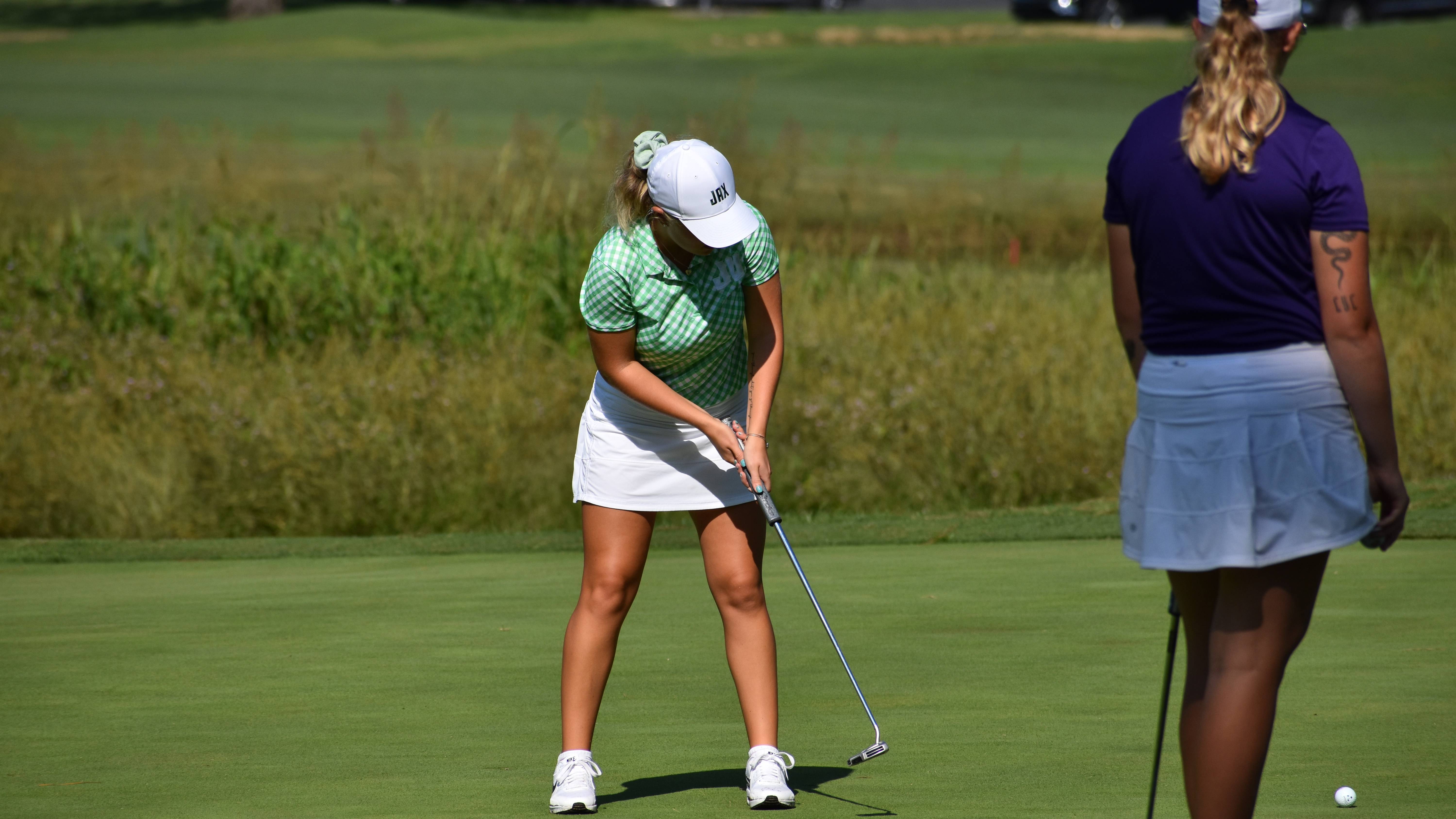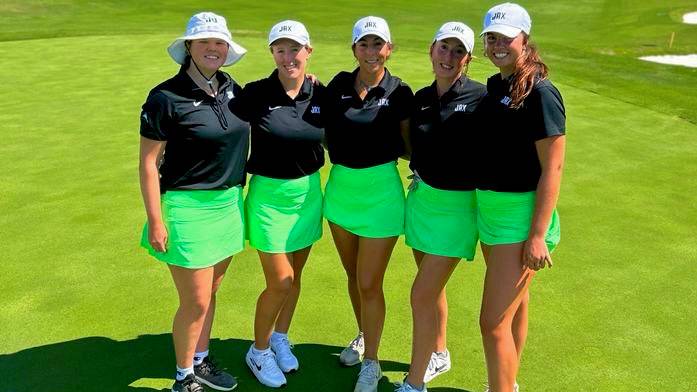
Jon Rahm, Luke Donald, Graeme McDowell, Danny Willett, Anna Nordqvist, Linn Grant, Maja Stark, Bronte Law…just a small handful of European names turned world-class professionals who all studied stateside.
Making the life choice to leave home aged 18 to go to America isn’t easy but there is a wealth of information out there and specialist recruitment companies tailored to helping you make that decision. Lorne Kelly founded college recruitment company Prodream USA in 2003 and he has the answers to all the questions about US golf scholarships below.
It's best to start by considering the pros and cons of attending university in the UK versus the US.
Why Do You Want To Go Overseas?
This will involve mapping out the future you want after college and looking at your best route to achieve it. If you really want a playing career then a golf scholarship can be the ultimate pathway to life on Tour, giving you the opportunity to compete against the very best students, while still gaining an academic degree.
If you do decide that you want to study in the USA then there are minimum handicap requirements, usually you must be off at least a handicap index of three, although in reality prospective students will be expected to have a handicap of between scratch and +5.

There are three NCAA divisions and over 800 institutions that offer golf scholarships. That might sound like a huge number, but when you consider that the average team size is around 10 players per college or university, you’ll understand how competition to go to the best Division I university is fierce.
Do your research and see which course meets your needs. Remember you’ll be studying an academic subject, called your ‘major’, also. That could be anything from Business Management to Sports Science. Make a list of your top five choices. The next step is to register with the relevant universities and devise a promotional plan for you as a candidate.
Make Your Application Stand Out
Remember, the very best institutions aren’t just looking at your golf results, although these undoubtedly help, they are looking for an all-round student with excellent academics also. You’ll also have to take entrance exams to get in.
As part of the application process you’ll have the opportunity to speak with college coaches and other representatives at the universities that you’re interested in. Zoom calls will give you a great insight into the golf programme and lifestyle you can expect at a place. If you have the budget you can also get on a flight and go visit them. Then hopefully you’ll start getting offers in!

Once you have several choices on the table you’ll be able to narrow down the best. The final decision is ultimately to choose where you want to go. You’ll then sign a National Letter of Intent (NLI). This is the binding agreement between a prospective student-athlete and the university or college to provide you with financial aid for the duration of your academic studies. It DOES NOT mean that they will pay 100% of your entire education. There will still be costs. So do your research.
England’s Gemma Burgess is enjoying her first trimester studying Sociology at Jacksonville University in Florida. She used College Sports America to put her in contact with colleges, promote her online and through social media, to get her name noticed.
“My advice to prospective students is to start the process earlier rather than later,” she explains, “that way you’ll be able to get in contact with many different universities. Then just go for it. Experience it and if you like it that’s amazing, but if you don’t, home will always be there.”
The 18-year-old is so-far relishing the experience of living in a different country, meeting lots of new people and best of all getting to play on so many great courses. “I do miss my friends and family back at home but college life is intense! There are 45 hours of golf per week when in season, so as a student-athlete you’re always busy. You get to visit a lot of different places when travelling for tournaments, which is a lot of fun.”
On the cost side of things, Burgess suggests that funding will vary from uni to uni so make sure you know what help is available. “There have been a few hidden costs but on the whole there is a lot you don’t have to pay for,” she insists. As for her advice to those about to embark on the application journey?
“Definitely play in lots of tournaments before and while going through the recruiting process, as the more you play in (as well as the better you play) will help you stand out to coaches.”
Then all that’s left is to book your flights and look forward to an amazing experience.
Meet The College Recruit: Lorne Kelly
Lorne Kelly founded college recruitment company Prodream USA in 2003. A former GB Walker Cup and Eisenhower Trophy winner in his amateur days, Kelly then went on to study in the USA himself, achieving the incredible accolade of NCAA Division I All American. After playing on the European Tour he launched Prodream USA and has spent over 20 years placing students on scholarships.
Kelly has sent over 1500 golfers to the states - an average of 75 a year! Nowadays he acts as Athletic Advisory to the Congaree Global Golf Initiative, which places students that are financially challenged on golf scholarships. We asked him about the steps a prospective golf scholarship student should take.
Q. What are the first steps golfers interested in getting a golf scholarship need to do?
A. To receive impartial advice from a reputable source, i.e. someone that’s been there and done it. In many cases, kids just want to pursue a golf scholarship in the US because it sounds cool. However, there are numerous eye openers, pitfalls and obstacles to overcome before you know for sure it’s for you.
Targeting the correct level of university remains the most important part, because there is a big difference between playing college and playing college golf on scholarship. The latter means you have achieved something, whereby, playing college golf and sitting on the bench of a fancy school is something many parents are willing to pay for. For me, that does nothing for their long-term development.

Q. What are the minimum standards required - both in terms of golfing ability & academic to get a golf scholarship?
A. There’s a big misconception here. Of course, coaches want to recruit the best junior golfers out there, but one’s academic achievements will always dictate where they can attend (not their standard of their golf). This is because you have to complete the same application process, just as regular students do.
For example, a young male with a scratch – two handicap that competes at a decent county level, with strong grades, right up to A-Level standard, will achieve much better ‘scholarship’ opportunities than a young male that’s played for England who has borderline or mediocre grades.
Young female golfers typically get better scholarship opportunities all-round, due to the fact there are more scholarships allocated to them, and with less female golfers out there, financially it becomes even more exciting.
Being realistic of the correct level to target still remains key however. Representing your country in the Home Internationals as a junior for example, does not mean you can expect the coach of Florida State or Stanford knocking on your door, offering a $60,000 yearly scholarship.
Globally, there are still hundreds of stronger recruits out there and the coaches know this. In the UK, we do however have a strong academic advantage, which can often open up doors to other scholarships that act as a fantastic ‘top up’ to the golf scholarship awarded.
Collectively, a relatively unaccomplished player can still achieve a 80-100% scholarship and then it can become somewhat of a no-brainer if you compare it to UK University options.
Q. What can golfers do to give themselves the best chance of getting a scholarship?
A. Having solid grades from GCSE level to A-Level will get them off to a good start. For fear of losing their jobs to kids that fail in the classroom, coaches simply cannot recruit the best players only. They need assurances that the player will come out the other end academically, i.e. graduate. This means pinpointing kids that perhaps might be ‘under the radar’, but show excellent attitudes, maturity and a willingness to work hard.
Of course, seeking the services of an established recruiting company like ProdreamUSA, to help with each step, will pay dividends but this can sometimes prove to be too expensive for families.
The alternative is to promote yourself which can be very rewarding, as you gradually cut your way through the recruiting process. However, If you go down this route, it is imperative that you don’t waste time by contacting coaches of Universities where they will simply have no chance at.
Time is of the essence during the recruiting process, coaches recruit up to two years in advance of when a prospect actually departs, therefore, you must make sure you target the correct level from the off-set.

Q. How much is getting a golf scholarship going to cost the golfer applying?
A. If you do it yourself it will cost nothing but it will take a lot of time and personal investment. If you use a recruitment company, it can indeed cost a few thousand pounds, but usually the fee is payable over a period of time, to help ease the burden.
Q. How easy/difficult is the process?
A. It can be very daunting and intimidating, there is no doubt about that. Navigating NCAA, NAiA rules, regulations and red-tape can all take its toll. If it was an easy process (particularly for non-US residents), then the likes of golf specific scholarship companies like ProdreamUSA, simply would not exist.
When I first started ProdreamUSA in 2003, there was a huge gap in the market for such a service. As it continued to grow each year, it became an invaluable stepping stone for any junior golfer wanting to play collegiate golf in the US.
More importantly, it became a vital tool for the US college coaches, because they relied on us doing all the initial evaluations, eligibility procedures and red tape. We could not get it wrong, the coaches knew this and as a result, they trusted us 100%. Incidentally, the longevity of a recruiting company suggests how good they are, nothing else. They pop up every year but most have no history, so you need to be very careful about that.
Q. Why a US golf scholarship versus studying at a Uni in the UK?
A. We try our best here in the UK and we do very well with certain aspects. Places like Birmingham and Stirling University for example offer excellent opportunities, but more so as an Academy type environment, i.e. you receive a lot of hands-on coaching, fitness help, etc.
College Golf in the US is all about competing and representing. It teaches you how to score, week in week out, on exceptional golf courses and at a very high level. You don’t have a college golf circuit or ‘Tour’ here in the UK. In the States you get to travel all over the country with your teammates, visiting some amazing places, culminating in a tremendous life experience. All along, you are edging closer to becoming a touring professional upon graduation, because of what you are experiencing.

Q. What notable golfers have you helped place?
A. I have been fortunate to place dozens of golfers that now compete in all of the world’s main professional tours. Some names that spring to mind recently are Daniel Bradbury (Eng), who won in his debut year last year on the DP World Tour. Grant Forrest (Sco) who is also a recent DP winner. Alice Hewson (Eng), LET stalwart, Hannah Burke, LET winner, Robert MacIntyre (Sco), Ryder Cup winner.
The list is extensive, yet extremely rewarding for me when I see them doing so well. I like to think that one of the main reasons they all reached such a high level is because I got their placement correct, back when they were 18 years old. It was a crucial time for them, and it resulted in a memorable four years of gaining the confidence and that feel good factor to handle the transition into professional golf.
Q. How far ahead do you need to start planning your application?
A. To be super organised, I would start seeking advice and planning things during the year a player is taking their GCSE’s. Selecting correct subjects in High School, taking a SAT or ACT entry exam, pinpointing the correct tournaments during the summer - these are all things that can ensure a successful college golf recruitment campaign. If you have a boy or girl that completes sixth form, has accumulated a fantastic golf CV at a national level choosing to then pursue US college golf, you will have missed the boat by two years, put it that way.
Q. What’s the best uni for golf scholarship in your opinion?
A. I simply could not mention one University specifically, because there isn’t one. The top fifty NCAA Division 1 Universities are all incredible. They offer some of the best academics in the world, and from a golf perspective, the infrastructure would just blow you away. Just look at what college sophomore Nick Dunlap, from the University of Alabama did a couple of weeks ago. To win a PGA Tour event as a 20 year old amateur college golfer, it highlights exactly what US college golf offers. I suppose it’s why over 80% of all professional golfers competing on the world’s main tours played US college golf.







